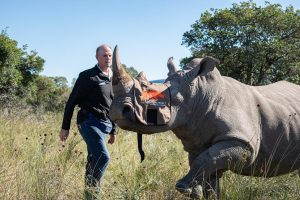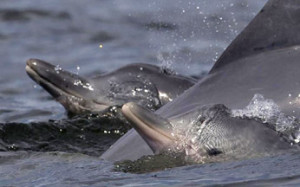From caterpillars that masquerade as queen ants to fish that sneak in sperm, nature abounds with clever creatures.
A reed warbler feeds a young European cuckoo. The cuckoo’s parent left its egg in the warbler’s nest to raise as its own.
The weekend’s finally here, which means it’s time for Saturday’s Weird Animal Question of the Week.
April Fools! It’s actually Friday, but we couldn’t wait to take the author’s prerogative to talk about some animal tricksters that don’t limit their sneakiness to one day a year. (See “Gotcha! 5 of History’s Most Outrageous April Fools’ Day Hoaxes.”)
Take the female bolas spider, chemical warrior and weapons expert.
Martin Stevens, author of the new book Cheats and Deceits, says this North American arachnid creates a dangling ball of sticky material that resembles an ancient weapon called a bolas. She then hangs from a “trapeze wire” connecting two pieces of vegetation and releases chemicals that mimic the pheromones of female moths.
When the male shows up thinking he’ll get a mate, she swings the sticky bolas, “ensnares the moth, and pulls him in to eat,” Stevens says by email. (Learn how some snakes masquerade as killers.)
Another dirty trickster is the water strider, an insect that literally walks on water and has “a twisted courtship,” says Katy Prudic, entomologist at the University of Arizona.
The females have genital shields to protect themselves from pushy males. To get around her armor, the males employ a nasty trick: They mount the females and strike the water, making vibrations that draw predators. (Since the male’s on top, he’d have a better chance of escaping.)
“He stops squirming once she cooperates, thus reducing the probability she gets eaten,” Prudic says.
In bluehead wrasse, a reef fish, some males never mature to adult size, Marah J. Hardt, author of Sex and the Sea, says via email.
Some male bluehead wrasse (pictured, an animal off Bonaire) have “absolutely gigantic testes.”
Instead they “put their energy into growing absolutely gigantic testes,” about 20 percent of their body weight. That’s a heckuva brass section.
These males, called “sneakers,” wait until the dominant male begins to fertilize eggs of a spawning female, then they rush in at the right moment and “dump their sperm into the mix,” Hardt says.
Sneakers deposit a dozen times more sperm than do the bigger males, and thus sire a high number of offspring. (Also see “Small Squid Have Bigger Sperm—And Their Own Sex Position.”)
Sure it’s hard to get a sitter, but that’s no excuse for punking another species into raising your kids.
The common cuckoo, native to the Europe and Asia, is famous for creeping into other birds’ nests and laying an egg, leaving the hapless hosts to raise the chick as their own. (Read more about the conniving cuckoo.)
The alcon blue butterfly of Europe and Asia lays its eggs on a host plant. After the young caterpillars hatch, they drop to the ground, Stevens says.
The insects then emit a similar scent to several species of Myrmica ants, which are fooled into taking the caterpillars into their nests and raising them. The caterpillars even make sounds and vibrations that mimic queen ants, causing the ants to “feed and care for them as if they were a queen!” Stevens says. (Learn about slave-making ants.)
Once the caterpillars turn into butterflies, the ants sometimes attack them, Stevens says, but the butterflies’ scales act as protection.
Then all is forgiven and the butterflies give the ants free rides to the airport, reports national-geographic.com.




